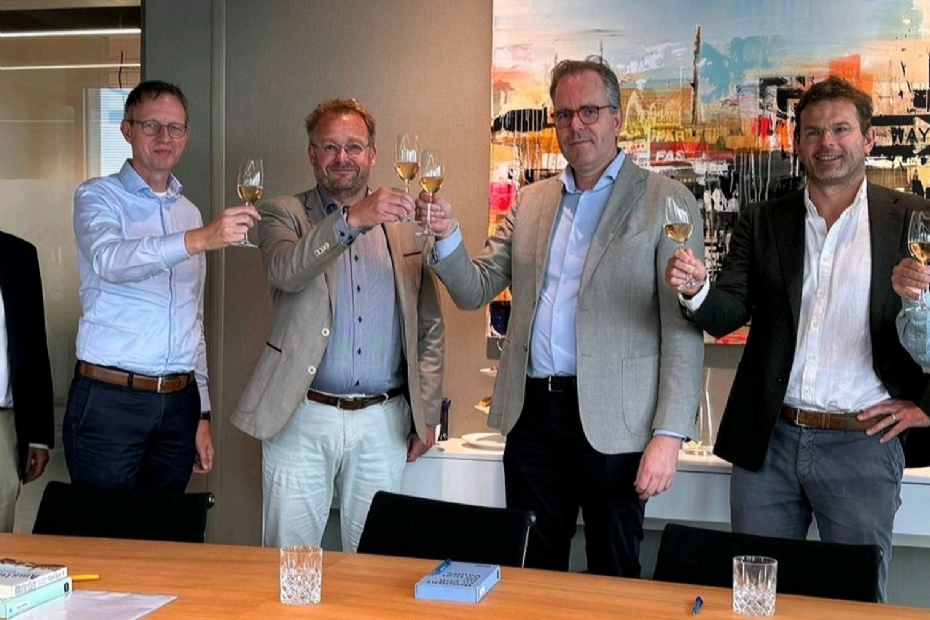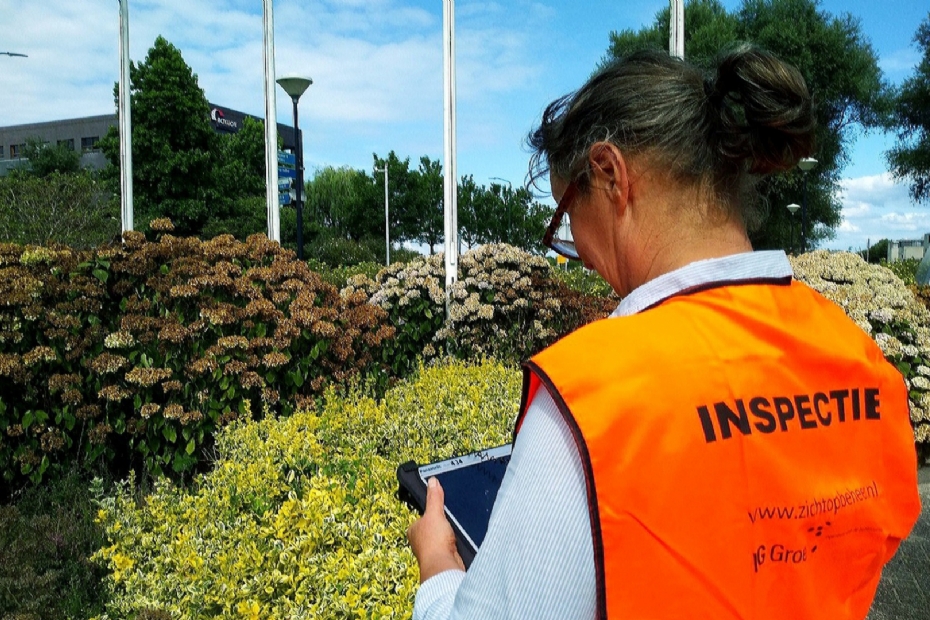It really is possible: saving money and improving outdoor space quality |
|
|
|
|
 |
| 309 sec |
Ralph Groenendaal (afinius) shares his vision on the upcoming 'cliff year'
In anticipation of the expected financial shortfalls at municipalities, Ralph Groenendaal, CEO of Afinius (the parent company of DG Groep), wrote a white paper. In it, he highlights six policy areas where municipalities can relatively easily start working more efficiently. It is not a plea for drastic system changes or reorganizations, but rather for smart organization, better collaboration with market parties, and making targeted choices. His premise is clear: deliver better work with fewer resources and make the work more attractive for the people executing it.
| Ralph Groenendaal, CEO of Afinius |
Groenendaal points to the widespread media attention for the 'cliff year' 2026, when a sharp decline in municipal revenues is expected due to a revised financing system. In this year's Spring Memorandum, the cabinet did announce recovery measures, such as structural compensation, particularly for the municipal fund and youth care. But according to RTL Z and platform iBestuur, these measures are nowhere near sufficient to cover the expected total deficit of more than 3 billion euros.
Whitepaper
Groenendaal wrote his white paper mainly for department heads and municipal councils, as a response to the municipal doom and gloom surrounding the cliff year. This practical guide not only offers concrete solutions to urgent, broader municipal issues, but also provides insight into the practical possibilities of the services offered by Afinius and its companies.
For claims management and the management and replacement of public lighting (OVL), Afinius already applies fully developed work processes. Meanwhile, subsidiary DG Groep is working on a concrete model for green space management. According to Groenendaal, this consists of a clear reporting process, smartly composed contracts, visual inspections (of image quality or via apps), and in the future possibly innovative image-based assessments combined with enforcement. One condition is crucial: the management data must be in order. 'Only when data, specifications, reports, and supervision are properly organized can municipalities truly save money while simultaneously improving the quality of the outdoor space,' says Groenendaal.
 | | In the summer of 2024, DG Groep, led by Frank Jan Uittenbogaart, joined the Afinius Group. |
|
|
Opportunities and risks
Groenendaal sees the cliff year as both a threat and an opportunity to fundamentally renew municipal policy, also in the field of sustainability and green management. 'Municipalities should not stop initiatives that work well but appear to cost money on paper while in reality they generate value,' he says. 'In that case, the cliff year becomes a threat. But if municipalities deploy market parties smartly to work more efficiently or differently, it actually offers opportunities. It requires nuance and insight: municipalities must truly understand what they are doing and where the value lies.'
|
|
'In public space management, efficiency is still not looked at enough'
| |
|
Recovering costs
Groenendaal cites Wmo recovery (recouping costs from liable parties) as a quick win to help cover expenses. 'Recovering damage to objects in public space has already been well addressed by municipalities in the past ten years, partly thanks to Afinius subsidiary NODR. That is not yet the case with Wmo recovery. Many municipalities think that Wmo recovery does not apply to them. Yet 3 to 5 percent of Wmo benefits involve liability aspects, for example when a wheelchair is needed after a traffic accident, with the insurer of the involved party covering the costs. Municipalities should therefore actively investigate whether there is a liable party, even if the insurer refers them back to the municipality. Municipalities can therefore better research and organize Wmo recovery internally in a more efficient way.' According to Groenendaal, there is still hesitation in public space management to look through that efficiency lens. 'While we know it has to happen, because by successfully recovering costs, municipalities can cover their losses.'
More efficient tendering
For years, green management was the neglected child, and municipalities have been working very lean in this policy area. What can be improved? Specifically for green space, Groenendaal sees opportunities to tender more efficiently, especially by making more deliberate choices about the right contract form. Municipalities are familiar with both performance-based and frequency-based contracts, but according to him still apply them too much as a standard. 'The right contract form depends on the situation, the asset, and the scale and complexity of the work. Sometimes a simple framework contract (a UAV contract, as opposed to a UAV-GC contract) is sufficient; in other cases, a performance or output-based contract is better. A performance-based contract, for example, is efficient if the desired result is more important than the precise method. Such as in neighborhood green spaces, which mainly need to look cared for, or in work that is difficult to capture in fixed frequencies, such as when the growth of grass or weeds varies. If a municipality gets creative and makes it very complex with all sorts of KPIs, the contractor will calculate all uncertainties into the price. Those are very expensive contracts, and the contractor has an incentive to do as little as possible. And he will also do as little as possible, putting quality at risk.'
Other contracts, such as performance contracts, are steered on measurable quality, while functional specifications only state the end goal, leaving the implementation to the market. EMVI tenders can also be more efficient, as they weigh not only price but also quality, sustainability, or innovation. Groenendaal: 'With the contract form comes a smartly designed specification, performance-based contract, or program of requirements, in which you can link execution to current themes. For example, mowing less can contribute to greater biodiversity.' According to him, the right choice and design of contracts fairly quickly lead to considerable cost savings.
 | | A DG Groep employee inspects public green space |
|
|
Data in order
Municipalities must know exactly what they want to achieve with outdoor space management. That starts with insight into costs and activities. 'Standard costs, such as for mowing grass per square meter or pruning trees, help to set up a realistic budget,' says Groenendaal. 'But to be able to steer on that, municipalities must have their data in order. Without that insight, you are basically working in the dark. Although many municipalities are already taking steps in collecting data, that information is still insufficiently used in practice. Work is often based on habits: "that's just how we do it". This leads to mistakes in execution. If a contractor does not know what type of planting is present or what mowing frequency applies, he may bring the wrong machines or do too much or too little. That leads to failure costs and loss of quality.'
Digitization from one core registry
Digitization offers opportunities to improve this, for example by picking up signals from public space more quickly. Groenendaal: 'Apps that allow residents to report damage or malfunctions - not only about green areas, but also about waste or lighting - strengthen municipalities' information position. More reports lead to more insight into quality. But often this digital information is not yet fully integrated into daily maintenance processes. Stakeholders often work with their own partial solutions, leading to fragmentation and inefficiency. Our strength is precisely that we make all digital information available to all stakeholders in the management process from one core registry (BOR). That provides oversight, efficiency, and better insight.'
Integrated approach
The integrated approach therefore differs per policy area. For example, Afinius has centralized claims handling: 40 claims handlers work for 230 municipalities from Amsterdam. This scale reduces costs per case, increases revenues, and improves quality. For lighting, Afinius uses efficient contracts and an optimized fault process, and work is spot-checked on 15 points. According to Groenendaal, this approach leads on average to a halving of management and maintenance costs.
For green space, DG Groep is also working on developing such a state-of-the-art approach. This includes a clear reporting process for complaints and visual deviations, efficient handling of damage and injury incidents, efficient contracts, a smartly designed specification, image quality measurements, and supportive enforcement through visual inspections. Groenendaal: 'A good reporting process is crucial. If you don't organize that, you don't know what's going on. Citizens want green spaces that are safe, neat, and livable. If you don't manage that, you get complaints, or worse: accidents and damage. And that ultimately costs more. Enforcement and supervision of green space work are also often a bottleneck for municipalities. Contractors respond to incentives. Without visible enforcement or feedback, less work is delivered, even if the specifications are clear.'
Managing with fewer people
Another challenge is the shortage of staff. The reflex is then to bring in temporary workers. According to Groenendaal, the solution does not always lie in extra FTEs. 'Certain tasks can be organized differently or partly externally,' he says, referring to his company's services. 'We want to help municipalities get the whole process in order. Not only advising, but also participating: carrying out inspections, writing policy plans, handling reports, preparing specifications, and supervising contractors. By outsourcing this entirely or partially, you don't have to keep looking for a jack-of-all-trades. Many municipalities do not inspect now, but if you make that affordable and objective, it suddenly becomes interesting.'
The future
Groenendaal concludes with a clear ambition for the green policy area. 'In the coming years, we want to develop standard costs and specifications together with municipalities that really work. Many municipalities are already digitizing, but are not yet using their systems optimally.' The ultimate goal of DG Groep: 'An efficient, lawful government that knows where the money goes and can better steer on quality.'
This article was previously published on 29 September 2025 on the website
of Stad + Groen.
| LOG IN
with your email address to respond.
|
|
|
| There are no comments yet. |
Tip the editors
|